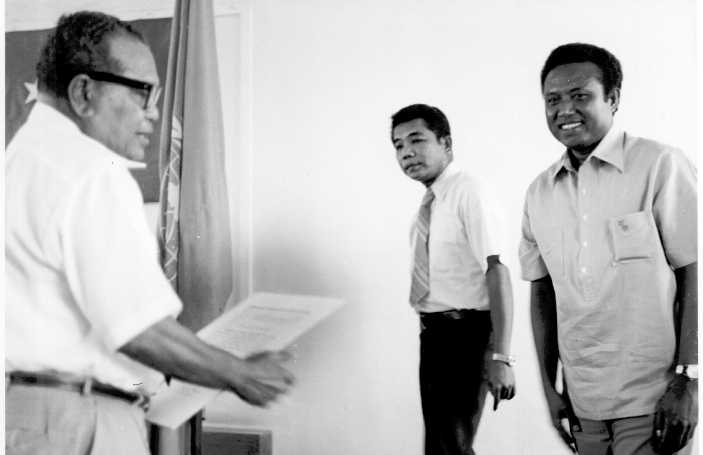
From Tahiti to New Zealand to New Caledonia to Palau, the U.S. and France unleashed a reign of terror against the Nuclear-Free and Independent Pacific movement in 1985.
The Pacific Islands have often been depicted as idyllic in Western fiction, paintings and movies. But there is another side to “paradise,” where the South Seas is a geopolitical region as subject to big power realpolitik and Machiavellian machinations as any other part of the world.
Have you ever scratched your head and wondered why the so-called “Republic” of Palau (aka ROP, Palau and Belau) is often one of only a handful of member nations that consistently votes with the United States (or abstains) on the most reactionary policies in the United Nations?
Made up of brown and Black Indigenous Pacific Islanders, ROP regularly casts its ballots in the UN against the Palestinians in favor of predominantly white Israelis, opposing Palestine’s application to become a full UN Member State, resolutions for cease-fires in Gaza, etc. And along with Israel, ROP has been one of the three countries to vote, with the United States, 187-3, for the U.S. embargo of Cuba. During the Iraq War, tiny Palau was even part of the “Coalition of the Willing.”
According to the National News, on May 10, 2024, “Palau’s voting record has aligned with that of the US about 96.5 per cent of the time” in the UN. What’s the deal with that? This article explains why Palau became Washington’s Pacific puppet, and much more.
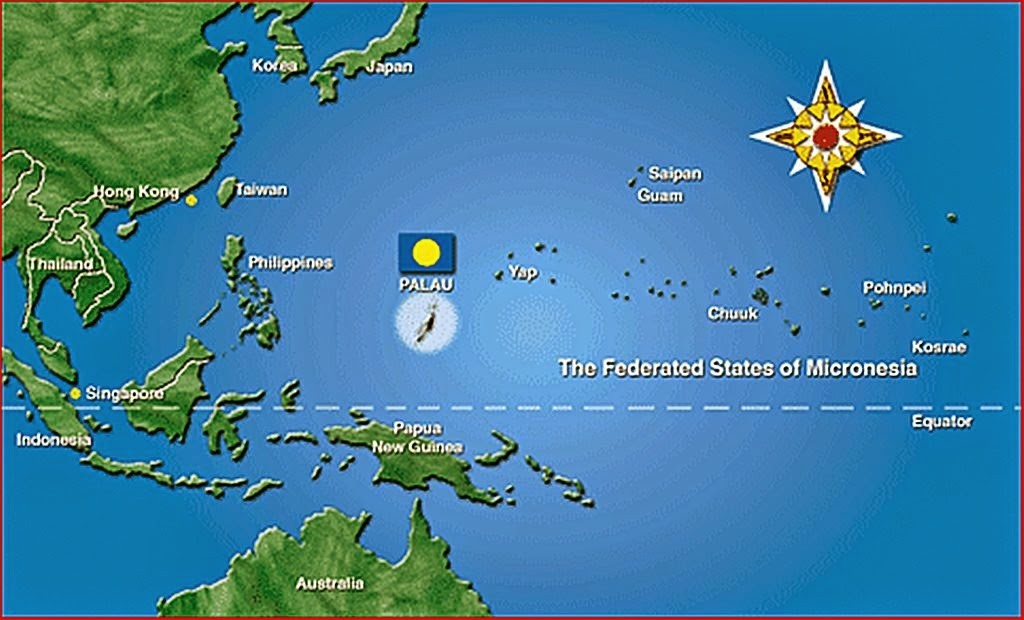
Counteroffensive: The Oceanic Empire Strikes Back
Following the post-war decolonization current that swept Africa and Asia, by the 1980s there remained two geopolitical regions that were still dominated by colonialism—the small island entities that composed Oceania and to some extent the Caribbean. Although Western Samoa spearheaded the trend toward independence in the former in 1962, settler state and other forms of imperial rule still dominated Polynesia, Micronesia and Melanesia in the 1980s.
The fact that this remains the case today is largely due to the pro-nuke, colonial counterstrike that, as the Cold War raged, assassinated presidents and activists, imprisoned independence leaders, bombed an eco-ship, and more, 40 years ago—in 1985—which Greenpeace had designated the “Year of the Pacific.”
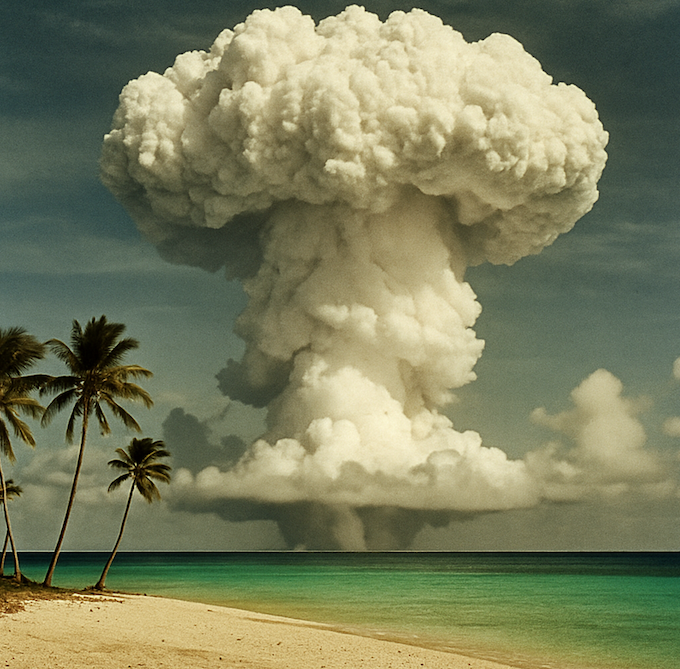
Part 1: Éloi Machoro: Kanaky/New Caledonia’s “Axe Man” Gets the Axe
The year 1985 opened ominously for supporters of the Nuclear-Free and Independent Pacific movement.
According to 1989’s Blood on Their Banner: Nationalist Struggles in the South Pacific by Kiwi David Robie (arguably the period’s leading journalist covering Oceania), Éloi Machoro was nicknamed the “Che Guevara of the South Pacific” and the “Robespierre of the South Pacific” due to his militant stance for the independence of Kanaky/New Caledonia, a Paris-ruled nickel-rich colony in Melanesia, where French settlers were outnumbering Indigenous Kanaks. Seeking support for Kanak independence, Machoro even traveled to Gaddafi’s Libya in 1984.
Machoro became the Minister of Security of the Kanak and Socialist National Liberation Front (FLNKS), which opposed and boycotted 1984’s legislative election, in which non-Native Caldoches (as New Caledonians of European origin are called) are permitted to vote.
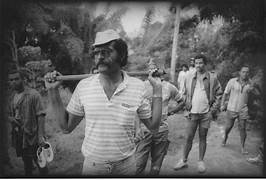
On “Sunday, 18 November 1984, Machoro led his militants from the village of Nakety to Canala, [his hometown, where the revolutionaries invaded the town hall and Machoro chopped] open a ballot box and burn[ed] the voting papers. A photograph of him splitting the urn in half with his axe earned him instant international notoriety and an epithet in the conservative French press as the ‘axe man of Canala,’” Robie writes in Blood on Their Banner.
Machoro proceeded to participate in a three-week siege of Thio, “home to one of the largest nickel mines in the world,” according to Workers World.
On January 11, 1985, Machoro and 30 freedom fighters prepared to carry out another siege, this time of the strategically located La Foa, to cut off access to Territorial Route 1 which connected to Nouméa, the overseas territory’s capital.
On January 12, 1985, a French sniper of the National Gendarmerie Intervention Group shot and killed Machoro, suppressing the almost two-month uprising. In doing so, phase 1 of the Franco-American counteroffensive against the Nuclear-Free and Independent Pacific movement was executed.
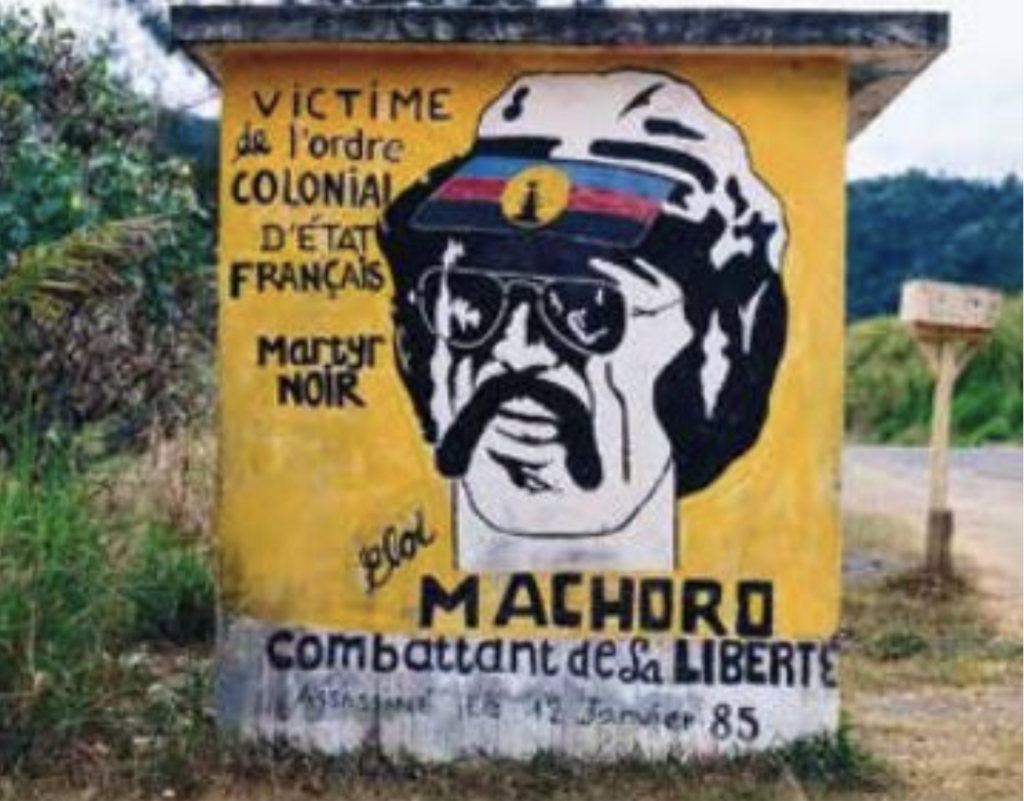
Part 2: Tahiti’s Charlie Ching Imprisoned
According to Blood on Their Banner, a 33-year-old calling herself Frédérique Bonlieu posed as a French environmentalist, but was really an agent of France’s counterpart to the CIA, Direction Générale de la Sécurité Extérieure (DGSE), who “infiltrated the Auckland office of Greenpeace… [and] fed information about the [Rainbow Warrior’s] Moruroa plans back to her headquarters in Paris.”
The 40-meter (131-foot) Rainbow Warrior was the flagship of the international environmental group Greenpeace’s fleet, which sailed the high seas committing nautical acts of civil disobedience and direct actions to save the whales, thwart maritime polluters, oppose dumping of radioactive waste, and more.
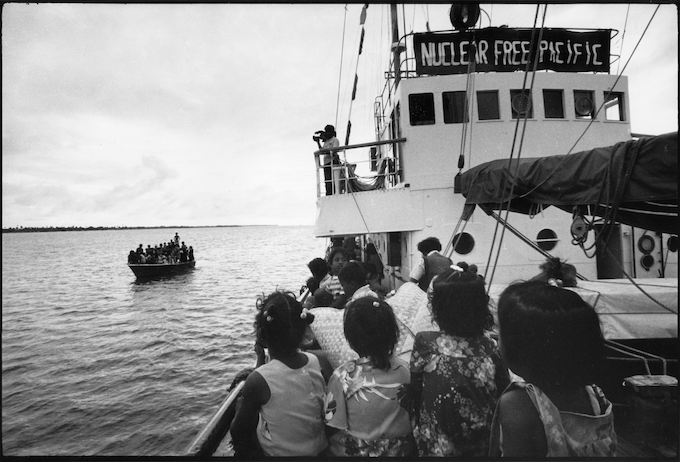
Greenpeace turned its attention to Oceania and declared 1985 to be the “Year of the Pacific.” Naturally, nuclear testing—which was then ongoing in French-occupied Polynesia—was a major source of concern for the confrontational eco-activists known for their derring-do. Although the U.S. nuclear-testing program that started in 1946 in the Marshall Islands had ended by 1958, radiation effects last far longer than a mere dozen years.
On March 1, 1954, the 15-megaton hydrogen bomb detonation of the Bravo test at Bikini Atoll in the Marshalls was 1,000 times more powerful than the A-bomb dropped on Hiroshima and has been dubbed “the worst nuclear test in U.S. history.”
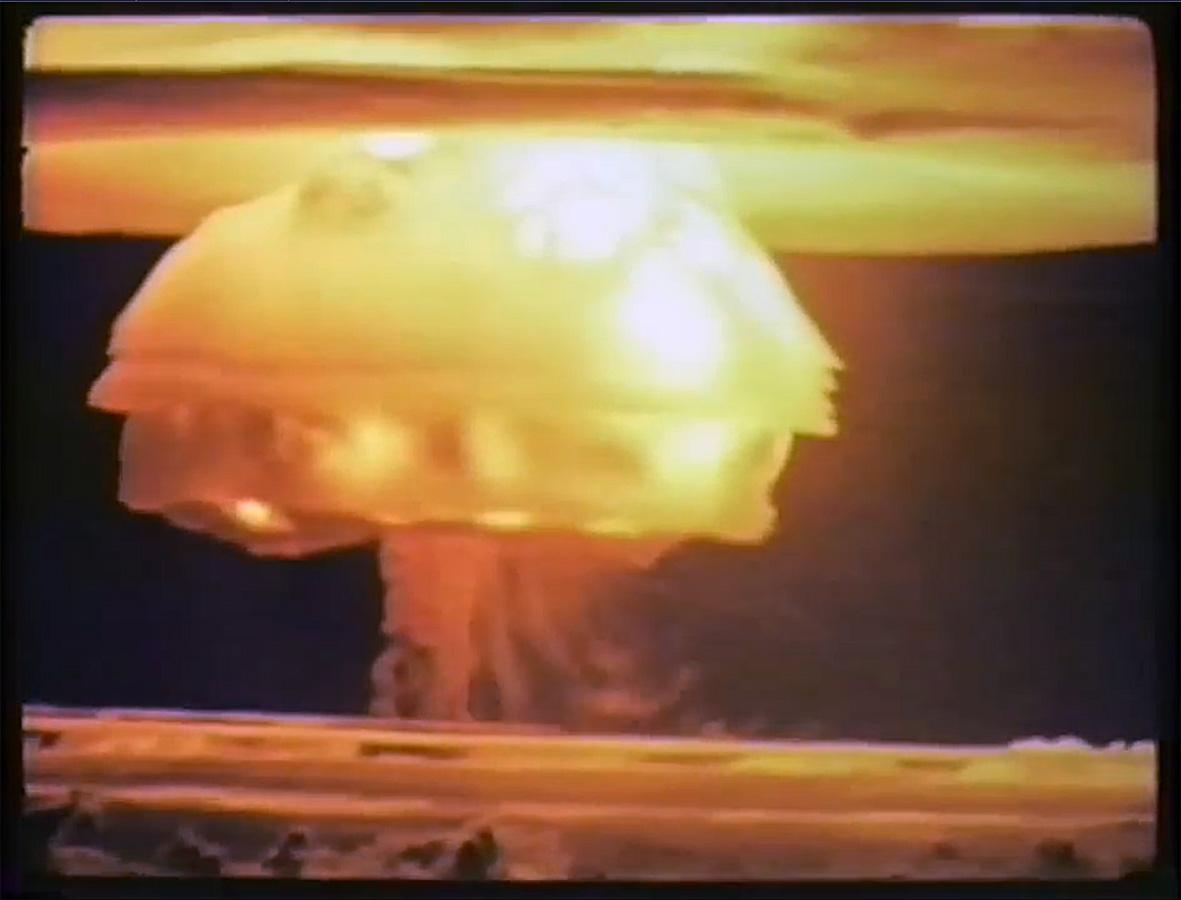
More than 30 years later, the Marshallese living only 75 miles downwind from the Bikini test at Rongelap Atoll were still contending with the fallout of the horrific H-bomb test. As Rongelap was still irradiated, the residents wanted to relocate, but the U.S.—which administered a post-World War II UN Trust Territory, that entrusted Washington with the protection of the trusteeship’s inhabitants, but used them as nuclear guinea pigs instead—declined to help.
Greenpeace to the rescue: In May 1985 the Rainbow Warrior, helmed by Captain Peter Willcox, nobly carried out “Operation Exodus,” relocating 320 Marshallese and their belongings about 150 miles south, from Rongelap to islets at Kwajalein Atoll, where the U.S. has a naval base that is part of a ballistic missile site, and has been used for the “Star Wars” missile defense system.
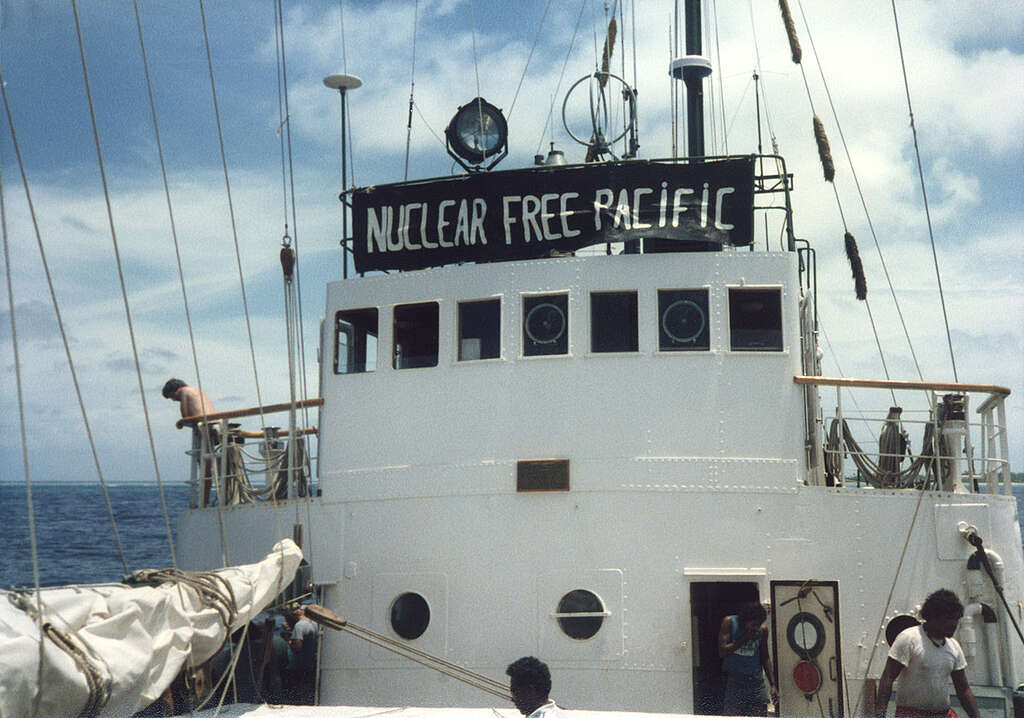
According to New Zealand journalist David Robie, who had covered the relocation episode aboard the eco-vessel, “the United States had been embarrassed by the evacuation from Rongelap.”
Robie also wrote in Eyes of Fire, The Last Voyage of the Rainbow Warrior, “The exodus seemed to open a whole new chapter for Greenpeace: the importance of humanitarian missions as an integral part of the environment campaigns.”
Greenpeace was to continue its anti-nuke campaign by sailing to Moruroa Atoll which, unlike Bikini Atoll, was still a very active nuclear-testing site. Located about 700 miles south of Tahiti in the Paris-ruled overseas territory of French Polynesia, Moruroa is the hub of the Centre d’Expérimentations du Pacifique, or CEP. And this is where the plot thickens and Charlie Ching enters.
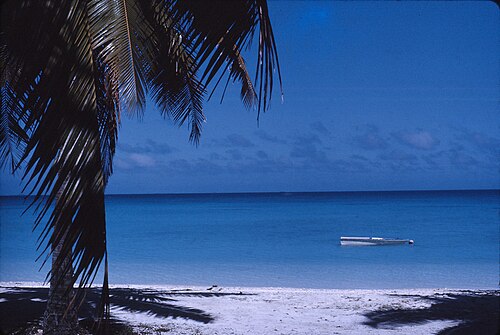
In February 1985, Ching, leader of the pro-independence, anti-nuclear Te Taata Tahiti Tiama (Free Tahitian Party), was in New Zealand, which under Labour Party Prime Minister David Lange had instituted a nuclear-free policy that refused access to New Zealand by nuclear-armed and powered crafts. The same month Ching was in New Zealand the USS Buchanan, a guided-missile destroyer, was denied entry to New Zealand ports.
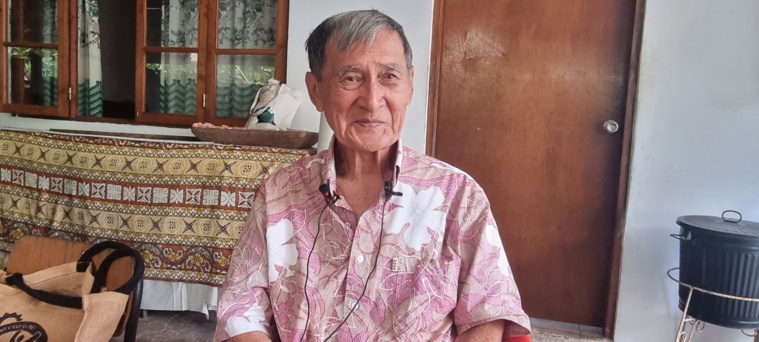
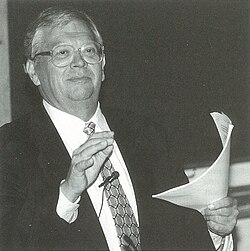
Ching had been in and out of prison because of his militant opposition to French colonialism and nuclearism. He had been apprehended attempting to blow up aircraft at Tahiti that serviced the CEP at Moruroa—“Le bombe pour le bombe,” Ching told me with a smile during an interview at Papeete circa 1987.
Now he was proposing, presumably to Greenpeace, that Tahitian activists would also land at Moruroa when the Rainbow Warrior sailed there, perhaps with other yachts from New Zealand that “would launch Zodiacs from just outside the 12-mile territorial zone. They would attempt to avoid the French security screen and land on the atoll.
French military authorities would be forced to arrest many protesters of different nationalities and deport them to their homeland, triggering an embarrassing series of news reports around the world,” according to Blood on Their Banner.
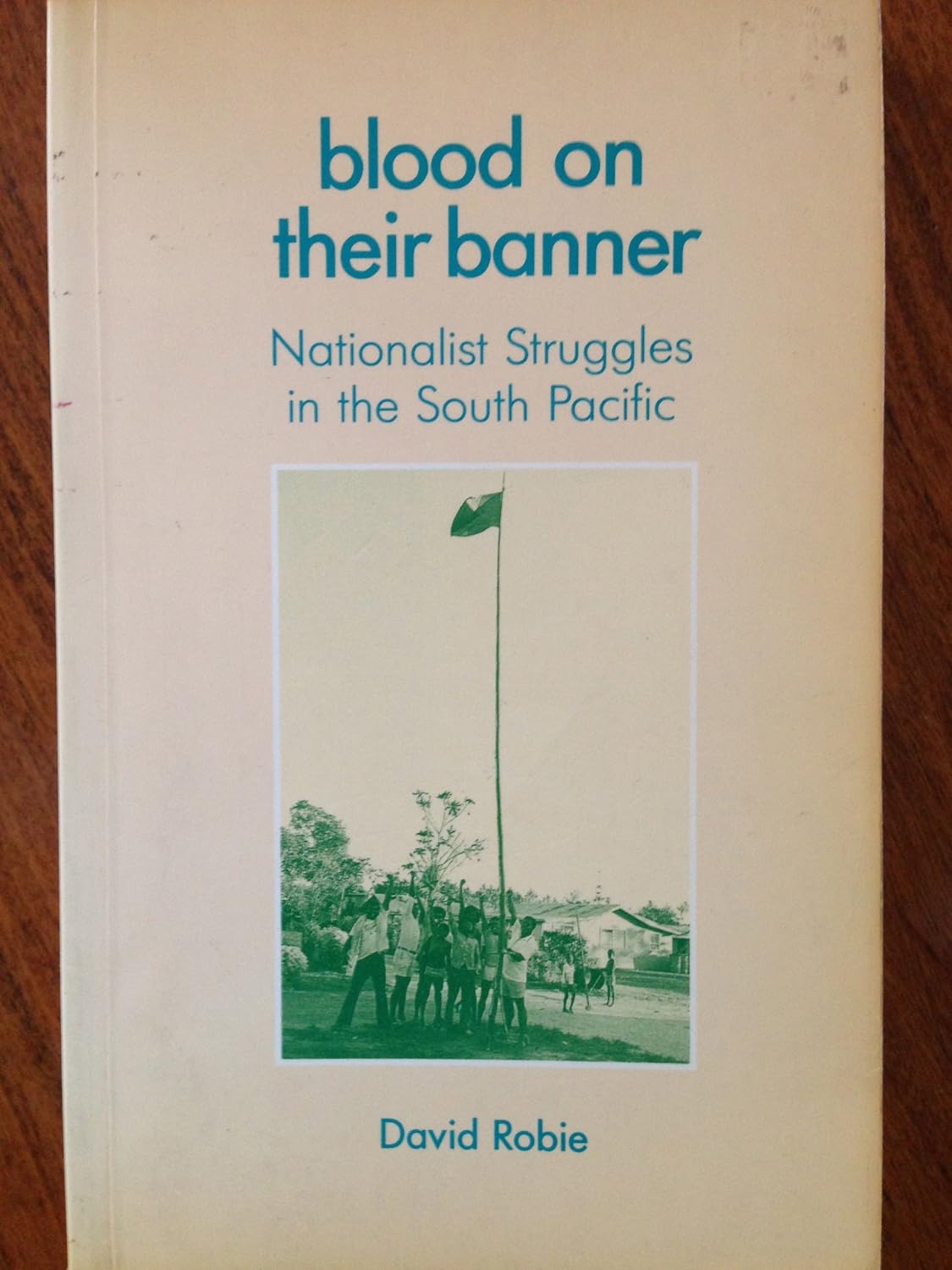
DGSE agent Bonlieu reported the action Ching proposed “and this was one of the reasons why the DGSE went ahead with the sabotage plan” against the Rainbow Warrior, Robie reported. He added that it also resulted in the arrest of Ching only two days after he returned to Tahiti from Auckland.
On March 2, 1985, the Tahitian activist was busted walking to “Bikini Day,” a pro-independence, anti-nuclear rally in Papeete, Tahiti’s capital. On August 27, 1985, Ching received a 30-month sentence for “organizing an ‘illegal’ demonstration.”
Although he was freed in December 1986, as Ching put it in Les Nouvelles de Tahiti, “The French government has always wanted to get rid of me.”
During the crucial period of the Franco-American counteroffensive against the NFIP, in particular, when Greenpeace’s flagship was expected to “invade” Moruroa, the colonizers succeeded in knocking French-occupied Polynesia’s most militant indépendantiste out of contention by locking him up behind bars.
Part 3: He Was Expendable: The Assassination of Palau’s President Haruo Remeliik
Of course, France is not Oceania’s only colonizer, and it is likely not the Pacific’s pre-eminent colonial power—that dubious distinction belongs to the United States. In fact, the U.S.’s first overseas land grab was in the Marquesas Islands, located 700 miles north of Tahiti in what is now French Polynesia.
During the War of 1812, U.S. Navy Captain David Porter briefly conquered and claimed Nuku Hiva, renaming the Marquesas the Madison Islands, in honor of the then-U.S. president. In contrast, Tahiti did not become a French protectorate until 1842 and an outright colony until 1880.
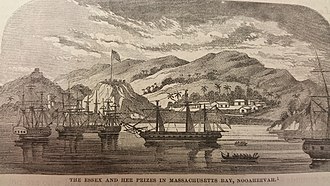
Although Washington did not keep possession of the Marquesas, it annexed the former Kingdom of Hawaii in 1898, following a U.S.-backed overthrow in 1893, and began colonizing Guam and ruling the Philippines the same year, while American Samoa became a U.S. territory in 1900.
After the U.S. defeated the Japanese at Palau and elsewhere in Micronesia and Melanesia during World War II’s island-hopping campaign across the Pacific Theater, Palau became the southwestern-most outpost of the United Nations Trust Territory of the Pacific Islands (TTPI).
This vast region, composed mainly of water, was located between Hawaii and the Philippines and United States-administered starting in 1947. The three million-square-mile TTPI, punctuated by 2,100 isles, was one of 11 post-war trusteeships established by the UN in former colonies, in Africa and Oceania, with a purported benevolent purpose: developing the one-time colonies so they could decolonize and freely choose their political futures by exercising legitimate acts of self-determination through referenda.
In addition to being the only U.S.-ruled trusteeship, it became the only one designated a “Strategic Trust,” which recognized the military significance of this huge swath of the planet, including for pursuing nuclear testing during the arms race.
The Marshall Islands, too, were part of the TTPI, although America’s atomic bomb tests actually began at those atolls in 1946, before the UN trusteeship had even begun. Palauans knew that the Marshallese were suffering from radiation and they did not want to have anything to do with nuclear weapons.
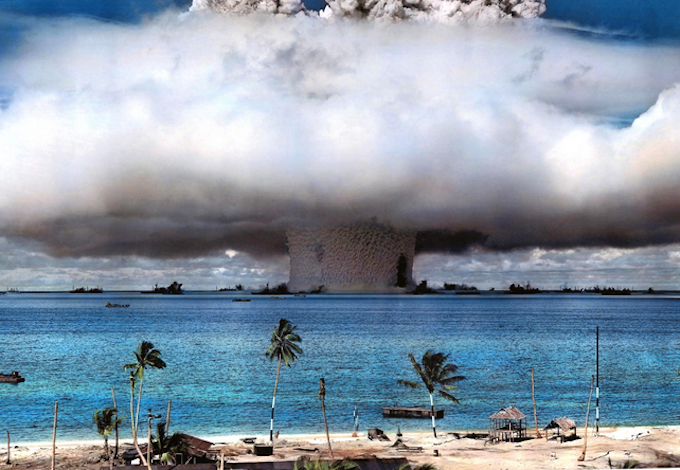
In 1979, as Palau prepared for self-rule, concerned about nuclear arms, fallout and irradiation, the islanders ratified the world’s first constitution banning nuclear substances and weapons from their territory with a 92% vote. Specifically, the new constitution required the approval of three-quarters of the electorate, a super-majority, to enter into any agreement allowing the introduction of hazardous substances, including nuclear weapons, into Palau.
The constitution was to be one of the last steps taken before Palau gained its sovereignty, along with “legitimate acts of self-determination” in the form of plebiscites that freely expressed the will of the inhabitants. However, the various islands of the TTPI were the only entities of the 11 UN trusteeships that did not conclude with outright independence or merging with contiguous lands. For the so-called “self-government” process to finally be completed, it also needed to enter into an agreement with the U.S.—a Compact of Free Association (COFA) which in reality tied Koror to Washington through economic dependency—that would end Palau’s trustee status.
However, Palau’s constitutional ban on nuclear arms was unacceptable to the U.S. It clashed with the Pentagon’s policy to neither confirm nor deny that its crafts are nuclear-powered or armed. In addition, the U.S. had contingency plans to relocate U.S. forward bases from the Philippines to Micronesia as possible fallback bases in the Asia-Pacific region.
So, there was trouble in paradise and the U.S. made the Palau Constitutional Drafting Commission redraft the constitution and delete the nuclear prohibition language. But Palauans overwhelmingly rejected the redrafted constitution, with 70% voting no. A third vote on the constitution followed in 1980, this time with the original nuclear prohibition reinstated in the draft, and Palauans approved it with a 79% vote. The stage was set for a fatal deadlock.
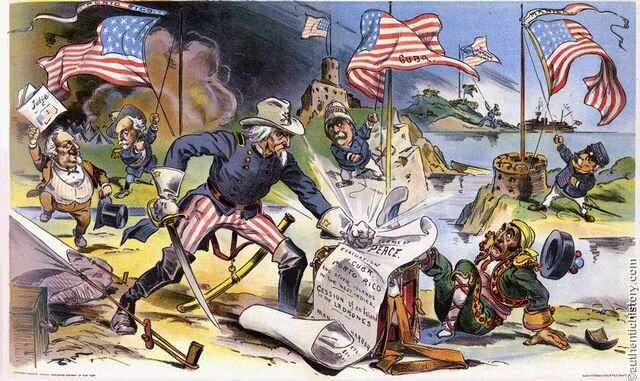
In Palau, politics is more than just a mere spectator sport: It is an important economic sector providing employment to many. Haruo Remeliik, who was born 1931 at Peleliu, site of an intense World War II battle which cost the Marines and Navy 6,526 casualties, rose through the post-war ranks of Palauan appointed and elective posts. Although he was no George Washington, Remeliik served as president of Palau’s constitutional convention (which had overwhelmingly voted for those anti-nuclear statutes) and was elected the first president of the newly emerging Republic of Palau.
According to Eyes of Fire, Remeliik “was a staunch advocate of the nuclear free constitution,” although in my experience covering Haruo (I conducted the last major interview with him for Pacific Islands Monthly), he was no nationalist firebrand or anti-nuke campaigner.
In any case, he proved himself to be incapable of resolving the fundamental constitutional quandary: that Palau’s framed rules specifically stipulated that its overriding provisions, including the statute that made ROP the world’s first national nuclear-free zone, required a 75% or more vote. With the eyes of the UN, in particular of the Trusteeship Council, which included the Soviets, on the TTPI, repeat referenda were foisted upon Palauans under the guise of “display democracy” where, in reality, forced voting was being deployed in order to dismantle the democratically decided will of the electorate.
COFA plebiscites were held in 1983 and 1984 during the first term of Remeliik’s presidency, but they repeatedly failed to attain or surpass that designated percentage of 75% demanded by the constitution’s supermajority requirement.
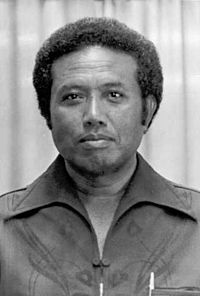
Remeliik was re-elected in 1984, but the constitutional deadlock of COFA versus nuclear-free provision remained inextricably entangled. Remeliik had a reputation as a womanizer and drinker, and his second term evinced no end in sight to the ongoing impasse, proving him to be an expendable obstacle to U.S. interests, and to their local collaborators.
Shortly after midnight on June 30, 1985, Haruo was shot in his head and neck by a gunman or gunmen as he walked from his car to his home in Ngerchemai hamlet, Koror. An hour later Remeliik was pronounced dead at Koror Hospital.
Remeliik’s liquidation set off a chain of events: Justice Minister Thomas Remengesau, Sr., and then Vice President Alfonso Oiterong served briefly as interim presidents until another long-time Palauan political hack, the pro-Compact Lazarus Salii, was elected in an August 1985 special election to serve out the remainder of Remeliik’s second term in office. But the most immediate impact of the June 30, 1985, murder in Micronesia at nuclear-free Palau was felt 4,200 miles southeast in Polynesia, at anti-nuclear Aotearoa/New Zealand.
Part 4: Code Name Opération Satanique: Aotearoa/New Zealand Sabotage and Subterfuge
The second blow of the Oceanic Empire’s one-two counterpunch against the NFIP movement was thrown only ten days after Remeliik’s assassination, when the other shoe dropped.
After departing from the Marshalls, Rainbow Warrior sailed to Tarawa—where a fierce 1943 battle had been fought as part of the U.S.’s island-hopping campaign—in the Republic of Kiribati in mid-June.
The ship received a hero’s welcome led by Prime Minister Walter Lini at newly independent Vanuatu on June 27. Formerly a “condominium” jointly ruled by Britain and France called the New Hebrides, Vanuatu became independent in 1980 and was staunchly anti-nuclear and anti-colonial, denying U.S. warships access to Port Vila “because Washington would not give assurance that nuclear devices were not being carried on board,” according to Robie’s Eyes of Fire.
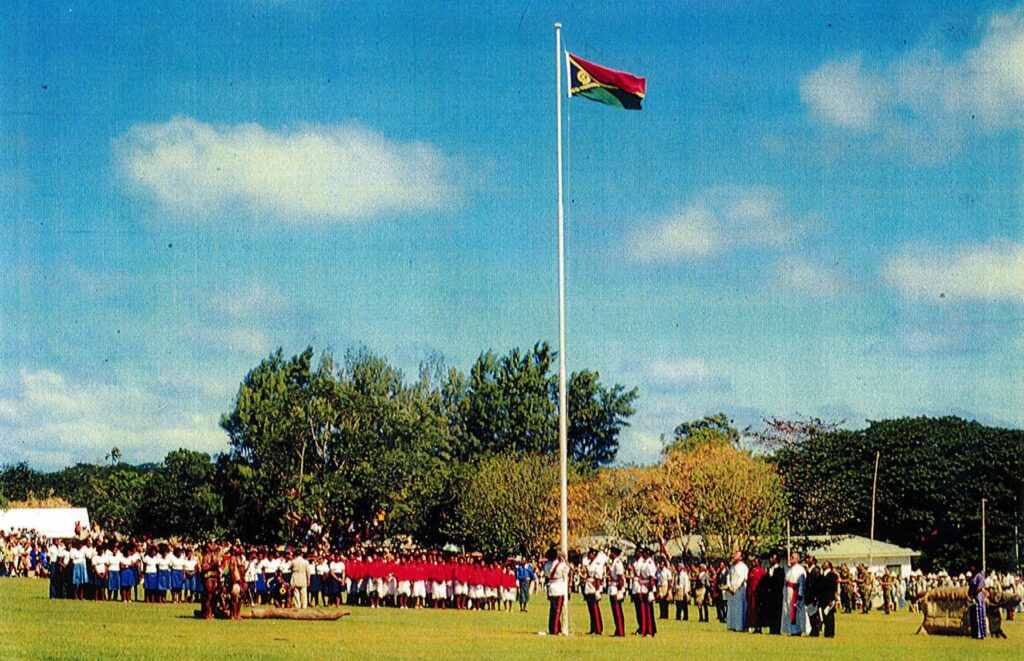
Robie adds that, at Port Vila, “Charles Rara, a newly appointed research officer in the Prime Minister’s office, joined the Warrior as the Vanuatu representative on the Moruroa voyage,” which was sure to irk Paris, because in addition to its resolute anti-nuclearism, “Vanuatu was the strongest Pacific supporter of the Kanak struggle for independence.”
Sailing from Majuro to Marsden Wharf, the Rainbow Warrior docked at Auckland Harbor on July 7, as it prepared for the next stop in Greenpeace’s anti-nuke crusade: sailing with an anti-nuclear flotilla to protest France’s “Force de Frappe” at Moruroa, Paris’s South Pacific nuclear-testing site in French-occupied Polynesia.
At about 11:00 p.m. on July 10, an explosion (albeit a non-nuclear one) struck the Rainbow Warrior. Portuguese-Dutch photographer Fernando “Pereira had been sitting in the mess room with most of the others when the first bomb went off. Probably believing he had time to rescue his cameras and take some photographs before the ship sank, he had gone below and was caught by the second blast” of limpet mines about two minutes later, according to Rainbow Warrior: The French attempt to sink Greenpeace, by The Sunday Times Insight Team.
Greenpeace reported, “The second explosion knocked Fernando Pereira unconscious below deck, and as the Warrior swiftly sank, he drowned.”
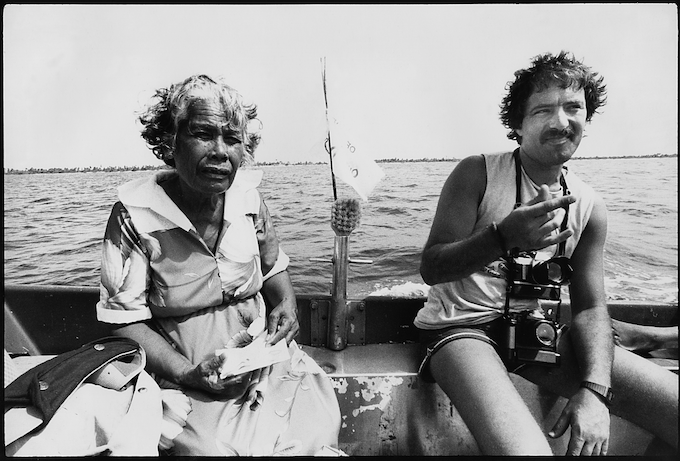
Greenpeace added that Fernando, who was 35 years old when he died, had “fled Portugal to neighboring Spain to avoid being forced to join the army and fight in the dictator Salazar’s war in Angola” and eventually “met and married a Dutch woman.” They had two children—Marelle was eight and Paul was five when their father signed up for the Rainbow Warrior’s fateful six-month anti-nuclear voyage.
Pereira had been sharing a cabin with the Melanesian Rara, who had gone ashore prior to the bombing, as did Robie, a long-time thorn in the side of French authorities due to his intrepid reportage. If the saboteurs had intended to kill Robie in the bombing, they failed to factor into their calculation that, as a New Zealander, he had returned to his Auckland home while the Rainbow Warrior was moored at Marsden Wharf.
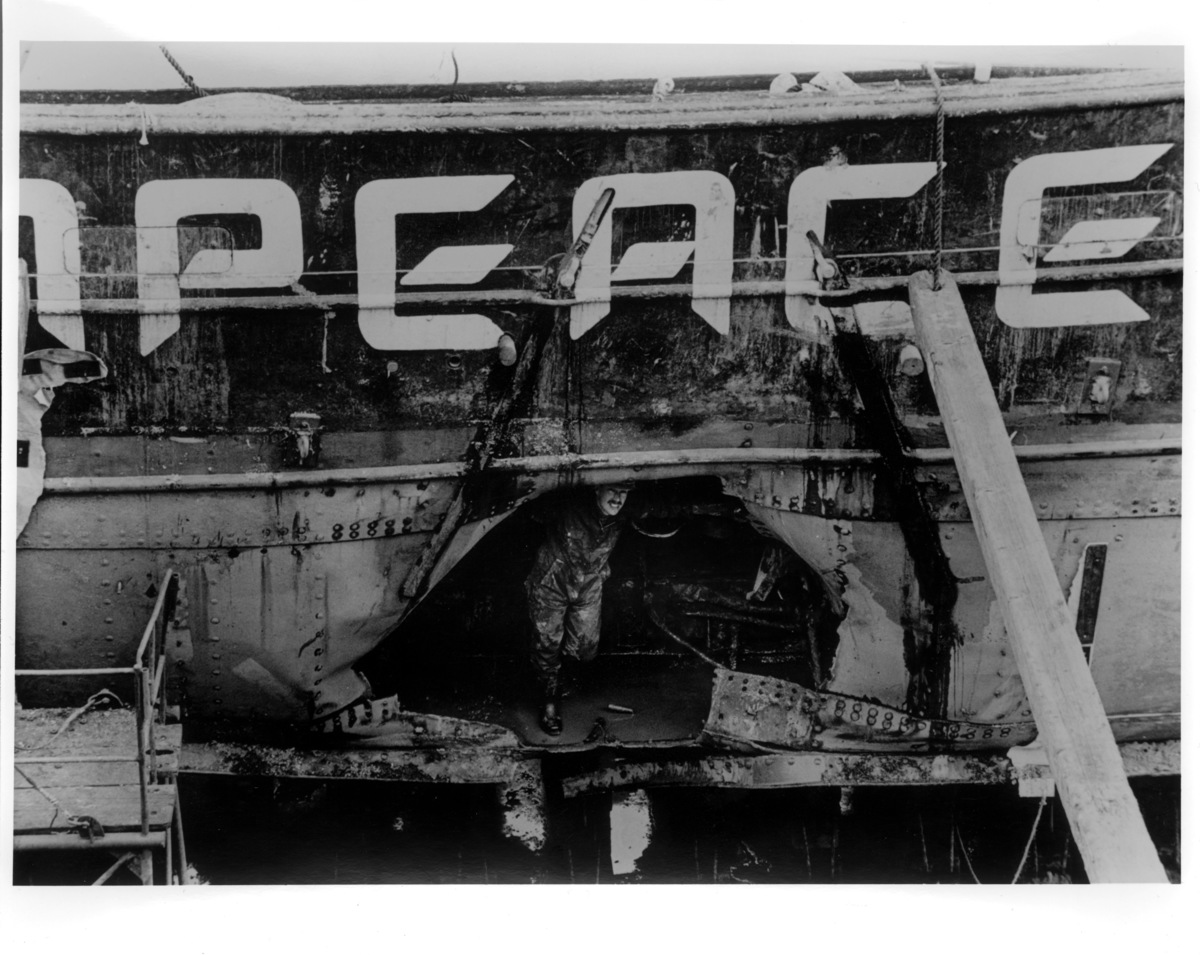
Part 5: Whodunit? Pacific Puppet Masters Pulling the South Seas Strings: The French Connection
To make a long story short, on July 24, 1985, New Zealand police arrested Major Alain Mafart and Captain Dominique Prieur for sabotaging the Rainbow Warrior, charging them with murder and arson. It turned out that they were French secret agents working for the DGSE who executed a covert operation code-named Opération Satanique, and were convicted in a New Zealand court of committing manslaughter.
According to Robie’s Eyes of Fire: “French Prime Minister Laurent Fabius admitted two months after the bombing that the Rainbow Warrior had been sunk on orders by the Direction Générale de la Sécurité Extérieure, France’s secret service. The admission, following the resignation of the Defense Minister Charles Hernu, and the sacking of DGSE chief Admiral Pierre Lacoste, was… threatening to the Socialist government of François Mitterrand…”
If the government of a party that purported itself to be “socialist” was behind this act of state terrorism against the Rainbow Warrior at anti-nuclear New Zealand, who was behind the assassination of the president of nuclear-free Palau while arch-conservative Ronald Reagan was in the Oval Office?
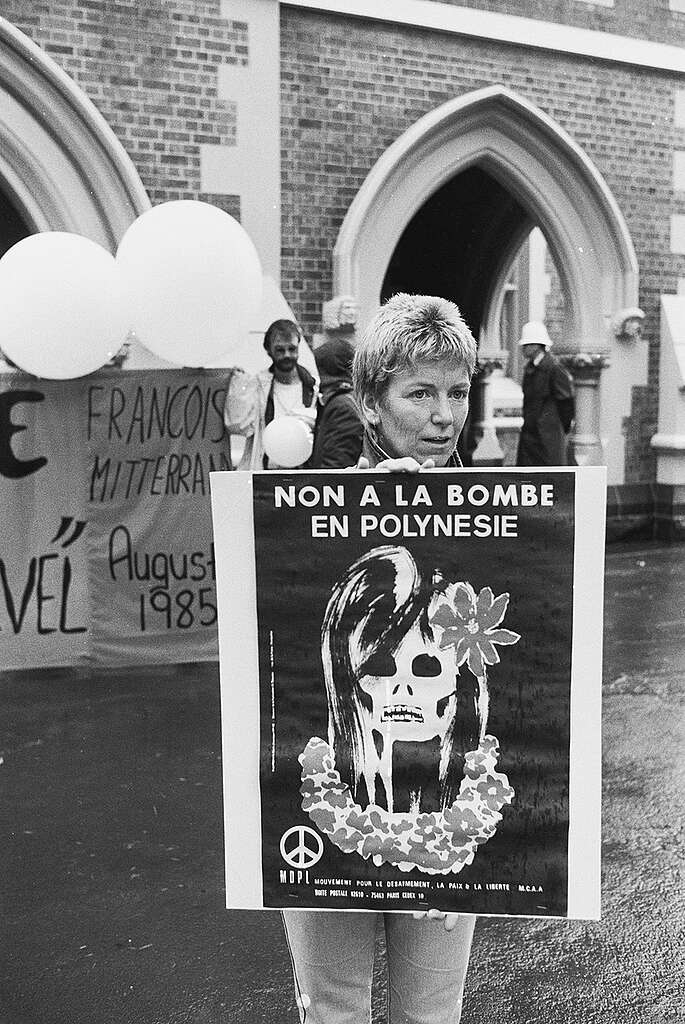
American Exceptionalism?
Going back to 1944, all roads to Palau lead to George Herbert Walker Bush, that son of the bourgeoisie. Long credited as the youngest naval aviator during World War II, the Pacific Theater’s fierce island-hopping campaign, including 1944’s bloody Battle of Peleliu at Palau, made an indelible impression on Bush.
By the time he was 20 the realpolitik and essential importance of the strategically located Palauan archipelago, which sprawled across the shipping lanes of Japan, Australia and Indonesia in the Western Pacific Ocean, was stamped on the youthful Bush’s psyche.
On July 25, 1944, fighter pilot George H. W. Bush’s plane sank a Japanese trawler at Kayangel Atoll, the northernmost tip of Palau. Interestingly, according to a 1993 cover story in Harper’s Magazine, after Bush’s plane sank the Japanese ship, survivors in two lifeboats were strafed, a violation of international law.

Decades later, when Harper’s Mark Hertsgaard asked Bush’s Houston office if Bush had committed this war crime, the response was: “no comment.” (This story was suppressed until after 1992’s election, although much was made of Clinton’s draft record during that presidential campaign).
In the 1991 Gulf War, while George H. W. Bush was commander-in-chief, U.S. forces repeatedly killed Iraqis after they fled and/or surrendered.
During the period when Palauans prepared for the UN-mandated transition to self-rule, Bush, as Director of the Central Intelligence Agency, oversaw the illegal surveillance of the Micronesian political status negotiations, which aimed at replacing the U.S.-administered trusteeship with self-governance.
In 1977, Bob Woodward reported in The Washington Post that Henry Kissinger ordered the bugging of the Micronesian negotiators, which was executed by Bush crony Brent Scowcroft with the goal of “exerting covert influence on key elements of the Micronesian independence movement.”
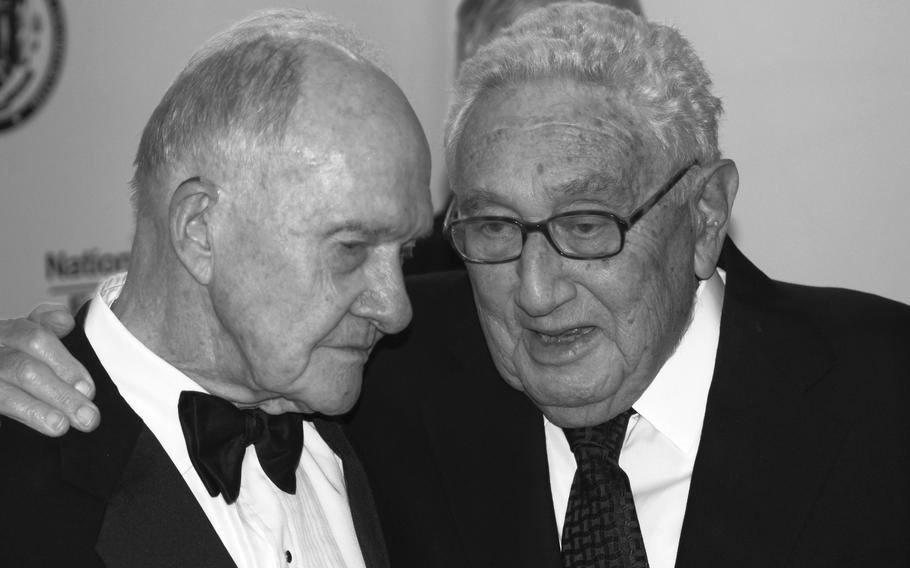
George H. W. Bush’s dubious record includes: a) involvement in the Iran-Contra scandal and his subsequent pardons for this implicated in that “arms for hostages” clandestine scheme; b) his invasion of Panama under dubious pretexts resulting in the deaths of thousands of civilians in the El Chorrillo barrio; c) his demagogic Willie Horton and “revolving-door” furlough campaign ads during the 1988 presidential campaign; d) April Glaspie and the Gulf War; and e) his father’s alleged dealings with Nazi Germany.
When he was vice president between 1981 and 1989, Bush arranged for another long-time ally, Fred Zeder, who was also a Texas businessman and fighter pilot in the Pacific during World War II, to become President Ronald Reagan’s personal representative for Micronesian status negotiations. Zeder had been admitted to the Young Presidents’ Organization in 1960 at the University of Michigan, where his roommate was Prescott S. Bush Jr., the brother of George Bush Sr.
While he was chairman and CEO of the diversified manufacturing company Hydrometals Corporation, Zeder moved the firm from New York to Dallas in the early 1960s. Zeder was elected to the City Council in Dallas in 1971 and also served on the Dallas-Fort Worth Regional Airport Board. His business interest in the Pacific Islands is evinced by the fact that he was chairman of the board of Paradise Cruise Corporation in Hawaii from 1978 until his death in 2004.
Zeder went on to become a major player in the newly emerging Republic of Palau. He facilitated the financing of a massive energy project called IPSECO on the island, apparently a covert action in the guise of a costly, far-too-big power plant and fuel farm that threatened to bankrupt the diminutive developing island nation and force it into an even weaker negotiating position with the U.S., making Palau desperate for Compact dollars. (However, the oversized plant could provide electricity to possible future U.S. military bases at Palau, which includes one of Micronesia’s largest islands, the 128-square mile Babeldaob.)
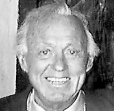
However, even though Palau signed the Compact in 1982, dispute over the provision overriding the constitutional nuclear ban led to a decade of political turmoil and violence in the country, as amending Palau’s framed rules required 75% voter approval.
Basically, Bush Sr. helped force Palauans to return to the polls some 15 times to vote on the Compact, their future political status and/or anti-nuclear statutes enshrined in its constitution.
Palauans were free to cast their ballots, but Washington did not accept the results unless the outcomes were favorable to U.S. policy. So, the people of Palau had to keep voting until the Pentagon got the result it desired. In the international annals of “display democracy,” this coercion was truly a unique type of voter suppression.
During the period when Palauans were contending with IPSECO and future political status plebiscites, Palau was beset by terrorism. Shooting Remeliik in the head in 1985 led to unlocking the thorny Compact negotiations. Shortly after the assassination, in October 1985, Vice President Bush traveled in person to the TTPI headquarters located north of Palau, at Saipan, in order to revive the deadlocked deal.
On October 12, 1985, he told a delegation of Micronesian officials: “We stand on the threshold of a new era. Soon, very soon we hope, the United States Congress will have completed its mandated program of review of the Compact of Free Association and will pass it with all of the commitments and essential elements intact. As soon as that is accomplished, we will go to the United Nations to secure termination of the trusteeship. When the Trust Territory is dissolved, our mission of replacing trusteeship with self-government will have been accomplished.”
With Bush’s high-level, personal involvement and seal of approval at the Northern Mariana Islands, a new agreement was reached. Nevertheless, anti-nuke Palauans organized and rallied, beating the new version of the Compact—which had received less than the required 75% of the ballots in the latest plebiscite—through the judicial system. The Palau Supreme Court handed down a decision stating that, in order to overrule the constitution’s nuclear-free stipulations a 75% vote was indeed necessary (the U.S. had been trying to argue that a supermajority was not necessary).
A reign of terror ensued: The office of anti-nuclear activists was firebombed and the Palau legislature was under siege in 1987. According to an investigation by the U.S. Congress’s General Accounting Office, a $2 million slush fund bankrolled dirty tricks.
Riding the wave of Bush’s personal intervention in the Compact negotiations that followed his predecessor’s homicide, Lazarus Salii, Palau’s second elected president, a COFA stalwart who had been in the welcoming committee for Bush Sr. at Saipan, picked up the gauntlet.
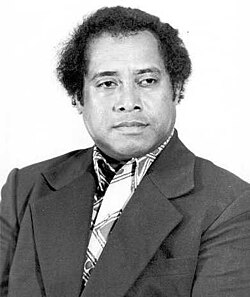
According to Cultural Survival, a Massachusetts-based pro-Indigenous non-profit: “Salii, had been instrumental in negotiating the Compact—which enables the U.S. to write off its economic obligations to a territory where it would have perpetual use of one-third of the minuscule land area for military purposes including nuclear storage. However, he, too, has been unable to engineer consensus. In February 1986, he came close when 72.5 percent of the voter turnout of 71 percent supported COFA at the third referendum. The Supreme Court of Palau refused to consider the compact ratified.”
Like Remeliik before him, Salii mysteriously died from gunshots on October 20, 1988, after he failed in his bungled bids for Compact ratification and elimination of the constitution’s prohibition of nuclear substances. (Salii’s death was deemed a suicide…)
Neither Confirm nor Deny: A Coordinated Covert Counterinsurgency Counteroffensive?
It has been proved beyond a doubt that high-ranking members of the French government took part in the conspiracy to bomb the Rainbow Warrior. Exposure of this covert action caused France’s Defense Minister and the chief of its intelligence service to resign.
Therefore, is it far-fetched to think assassinating Palau’s president(s) and the reign of terror in the country was American-sponsored? The Pentagon had motive: relocating bases from the Philippines (closed after Marcos’s overthrow) to Palau—but the world’s first nuclear-free constitution stood in the way of this aspiration. And the U.S. appears to have acted in league with a local pro-Compact chiefly faction on the ground at Palau.
George Herbert Walker Bush was CIA Director from January 30, 1976, to January 20, 1977. Other high-ranking U.S. officials during the Reagan-Bush era who, like Bush, had links to Palau include, for example, Secretary of State George Shultz, who secured Palauan beachheads as a Marine sergeant during World War II and returned to Palau in 1986 during the Compact re-negotiation process.
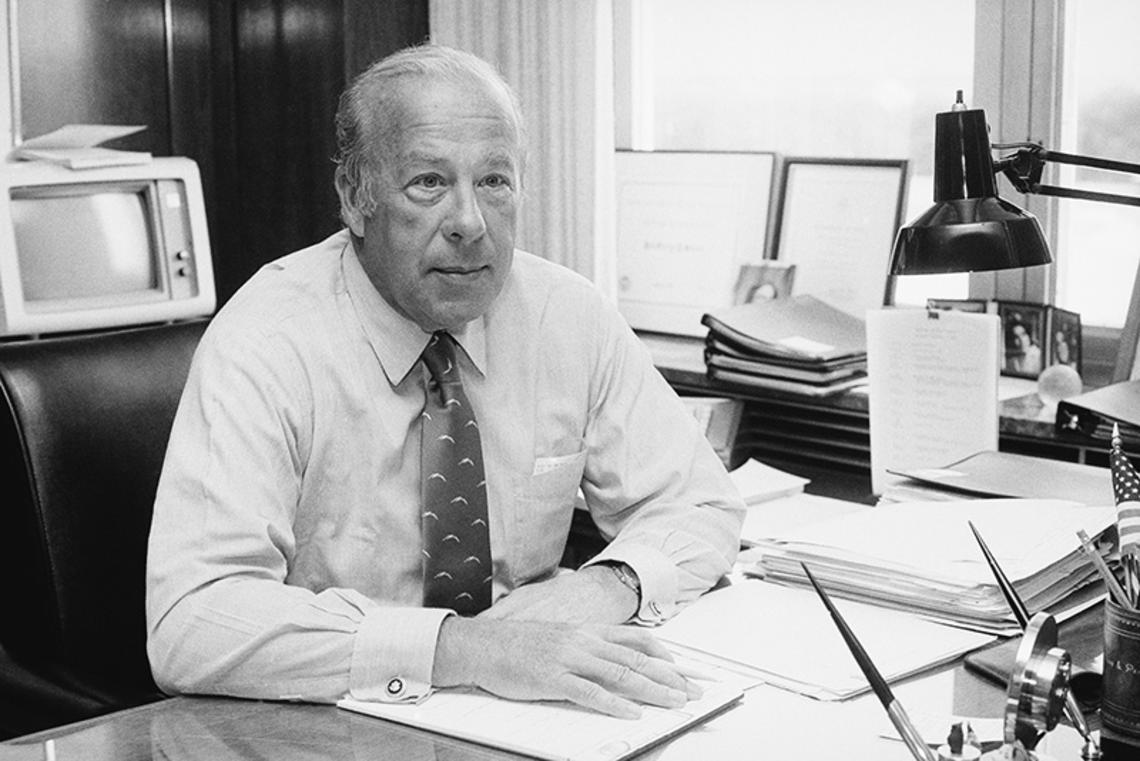
In the late 1970s, Admiral William Crowe surveyed land in Palau for U.S. bases, and became CINCPAC (Commander in Chief, Pacific) Commander and Joint Chiefs of Staff Chairman 1985-1989. When he was elected president. George H. W. Bush appointed Brent Scowcroft—who had arranged the Kissinger-ordered surveillance of Micronesian status negotiations—as National Security Adviser.
In December 2014, as Jeb Bush prepared for his presidential bid, reports about his financial dealings revealed, according to the L.A. Times that “Bush and his partners also set up two other funds. BH Logistics raised $26 million and invested it in Dorian LPG Ltd., a shipping company incorporated last year in the Marshall Islands to transport propane gas.” While Politico noted that BH Logistics is involved in the shale oil industry, a more intriguing point is: Why has Jeb Bush been connected to the remote Republic of the Marshall Islands and is doing business there?
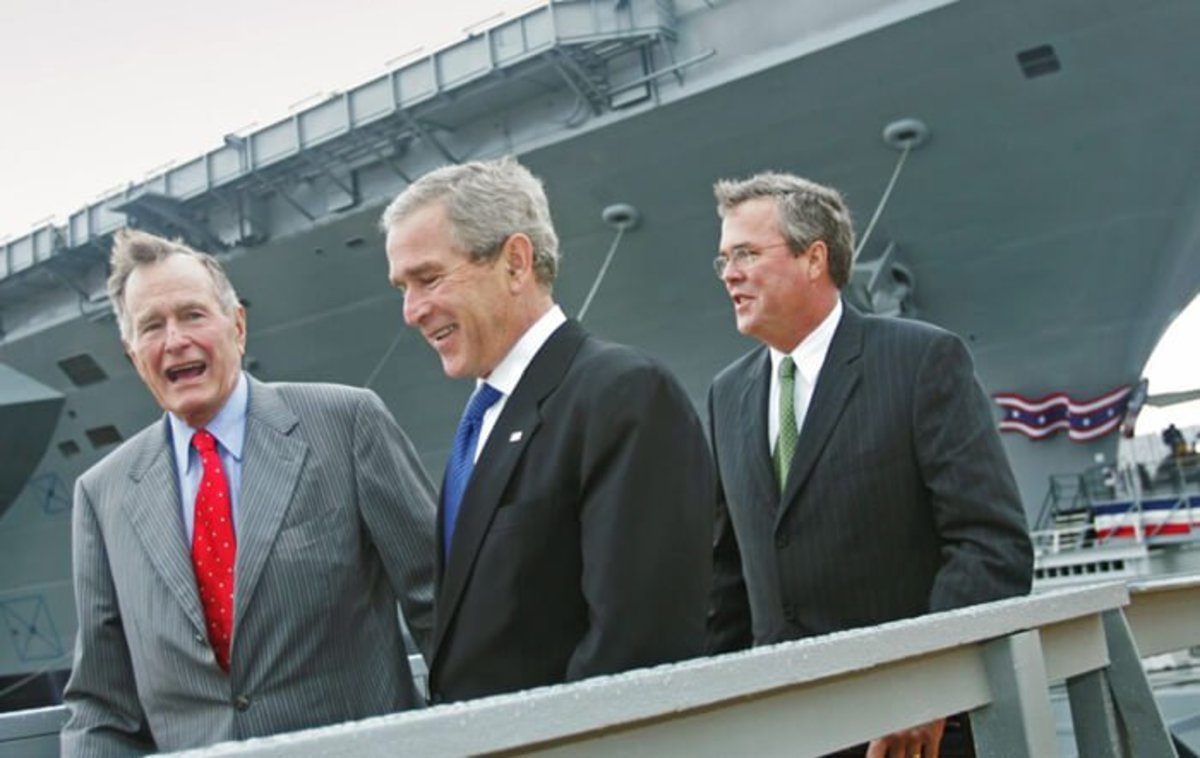
During a time of instability, as the Cold War continued, five Western Pacific leaders died from 1983 to 1990: In 1983, when prominent Filipino opposition politician Benigno “Ninoy” Aquino returned from exile, he was gunned down at Manila’s airport.
Three years later, Philippines President Ferdinand Marcos was overthrown, dying in exile in Hawaii in 1989. Former Guam Governor Ricardo Bordallo shot himself in 1990. We have already covered the strange deaths of Palau’s two presidents, Remeliik and Salii, as well as the shooting of Kanaky/New Caledonia’s Éloi Machoro, plus the murder of photographer Fernando Pereira aboard the doomed Rainbow Warrior.
You do not have to be Sherlock Holmes to deduce that at least some of these violent episodes were part of a coordinated counterinsurgency campaign and conspiracy aimed at destabilizing the Nuclear-Free and Independent Pacific movement, which threatened the regional realpolitik and hegemony of Oceania’s top imperial powers.
How much did Paris and Washington collaborate in this counteroffensive that threatened their military and nuclear interests in Oceania? If the news media spent 1% of the time they do covering sensationalistic stories such as Sean “Diddy” Combs’ trial or hagiographic reportage on the 2019 funeral of George H. W. Bush, the case could be cracked.
Certainly, as David Robie points out in Eyes of Fire, the Rainbow Warrior made the U.S. look bad by reminding the world that not only had the Pentagon irradiated the Rongelapese, but that the U.S. would not help relocate the islanders from their tainted atoll—and it was left to Greenpeace to evacuate the Marshallese. Of course, Greenpeace’s plan to sail to Moruroa to demonstrate against France’s nuclear testing there (which continued until 1996) angered Paris, as did the fact that a representative of Vanuatu, the Pacific’s biggest booster of Kanak independence for New Caledonia, had become a member of the Rainbow Warrior’s crew. Greenpeace’s flagship epitomizes the common interests the French and American imperialists shared in striking back at the NFIP cause.
From Polynesia to Melanesia to Micronesia, the imperial marionettists are martinets who continue to pull the strings of their Pacific puppets. New Caledonia and French Polynesia remain settler states under the heel of French occupation. After Palau was forced to scuttle its nuclear-free constitution and to accept the Compact, it had a fig leaf of self-governance but, in fact, remains financially dependent on Washington, voting with the U.S. and Israel regularly at the UN, which turned its back on its last and final trusteeship—the only one to be a “strategic” trust, to not lead to independence or merger with a contiguous land mass and, not coincidentally, the only one of the 11 trust territories to be American-administered.
But despite the violent attacks and setbacks that wracked the region, the Rarotonga Treaty, which declared the South Pacific Nuclear Free Zone Treaty, was adopted by the South Pacific Forum (a regional inter-governmental organization now called the Pacific Island Forum) on August 6,1985, and entered into force on December 11, 1986.
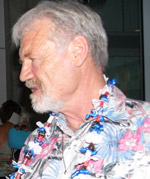
Prior to publication of this article, David Robie, perhaps the Pacific’s pre-eminent journalist, recently informed me, “There will be a memorial dawn vigil on board the Rainbow Warrior III here in Auckland on July 10”—the 40th anniversary of the bombing of the Rainbow Warrior.
To commemorate the anniversary, a new edition of Robie’s Eyes of Fire, originally published in 1986 and now subtitled The Last Voyage and Legacy of the Rainbow Warrior, has been published, with a foreword by former New Zealand Prime Minister Helen Clark.
As Gerd Leipold, Greenpeace’s former executive director, is quoted saying in Eyes of Fire: “The French may be able to sink the Rainbow Warrior but what they, and the other nuclear powers, need to realize is that they cannot sink the rainbow.”
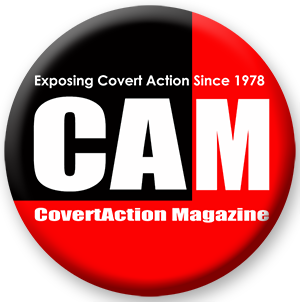
CovertAction Magazine is made possible by subscriptions, orders and donations from readers like you.
Blow the Whistle on U.S. Imperialism
Click the whistle and donate
When you donate to CovertAction Magazine, you are supporting investigative journalism. Your contributions go directly to supporting the development, production, editing, and dissemination of the Magazine.
CovertAction Magazine does not receive corporate or government sponsorship. Yet, we hold a steadfast commitment to providing compensation for writers, editorial and technical support. Your support helps facilitate this compensation as well as increase the caliber of this work.
Please make a donation by clicking on the donate logo above and enter the amount and your credit or debit card information.
CovertAction Institute, Inc. (CAI) is a 501(c)(3) non-profit organization and your gift is tax-deductible for federal income purposes. CAI’s tax-exempt ID number is 87-2461683.
We sincerely thank you for your support.
Disclaimer: The contents of this article are the sole responsibility of the author(s). CovertAction Institute, Inc. (CAI), including its Board of Directors (BD), Editorial Board (EB), Advisory Board (AB), staff, volunteers and its projects (including CovertAction Magazine) are not responsible for any inaccurate or incorrect statement in this article. This article also does not necessarily represent the views the BD, the EB, the AB, staff, volunteers, or any members of its projects.
Differing viewpoints: CAM publishes articles with differing viewpoints in an effort to nurture vibrant debate and thoughtful critical analysis. Feel free to comment on the articles in the comment section and/or send your letters to the Editors, which we will publish in the Letters column.
Copyrighted Material: This web site may contain copyrighted material the use of which has not always been specifically authorized by the copyright owner. As a not-for-profit charitable organization incorporated in the State of New York, we are making such material available in an effort to advance the understanding of humanity’s problems and hopefully to help find solutions for those problems. We believe this constitutes a ‘fair use’ of any such copyrighted material as provided for in section 107 of the US Copyright Law. You can read more about ‘fair use’ and US Copyright Law at the Legal Information Institute of Cornell Law School.
Republishing: CovertAction Magazine (CAM) grants permission to cross-post CAM articles on not-for-profit community internet sites as long as the source is acknowledged together with a hyperlink to the original CovertAction Magazine article. Also, kindly let us know at info@CovertActionMagazine.com. For publication of CAM articles in print or other forms including commercial internet sites, contact: info@CovertActionMagazine.com.
By using this site, you agree to these terms above.
About the Author
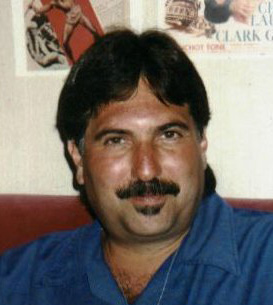
Ed Rampell is an L.A.-based film historian and critic who also reviews culture, foreign affairs and current events.
Ed can be reached at edrampel@gte.net.
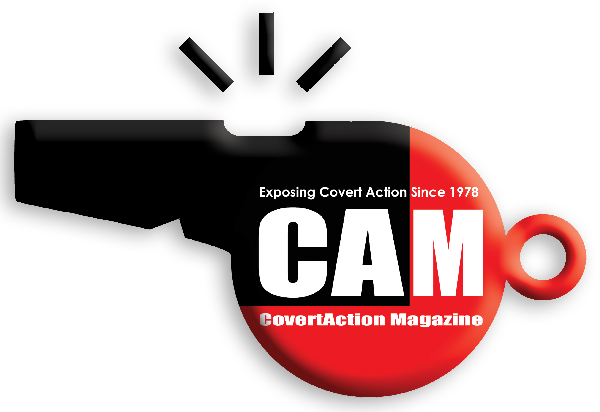
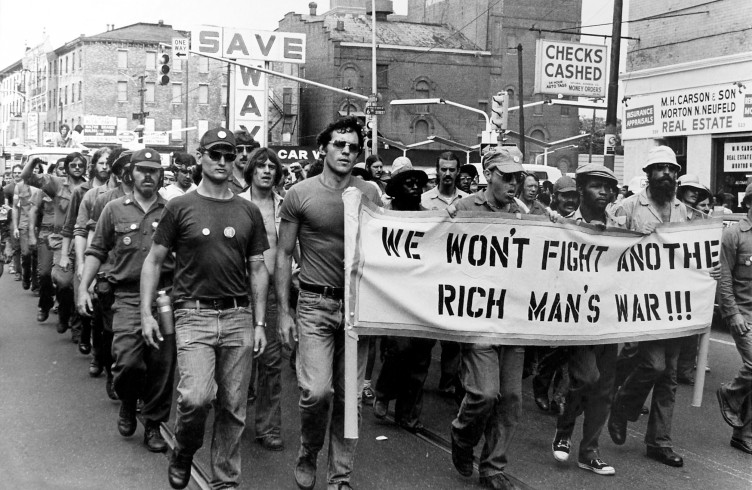
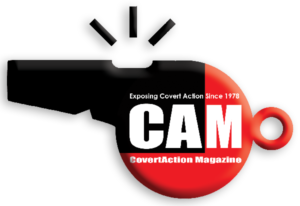
7dnn3r
I do not disagree with the reasons given as to why some countries voted the way they did at the United Nations but there may possibly be other reasons as described below: Maybe I am a bit biased, but most people are biased to some extent.
The support of the Marshall Islands, Micronesia, Nauru and Palau did not come out of nowhere, said Michael Ronen, Israel’s non-resident ambassador to 13 Pacific Islands, including the Marshall Islands and Micronesia, adding that he spent a lot of time lobbying before Thursday’s vote.
“We weren’t surprised that these four countries voted against a Palestinian state,” Ronen told Yedioth Ahronoth. “We’ve been working there in an orderly and continuous fashion for 30 years. We don’t tell them that we’re sending them an Israeli doctor in exchange for their vote. Other countries discover the Pacific only when they need it. A nation suddenly needs votes at the UN and instantly embraces these countries, offering them assistance, only to forget about them afterwards. We don’t work like that.”
Israel doesn’t buy votes, but it does send aid to the Pacific. Medical and agricultural experts have traveled to the South Pacific from Israel, and in the 1990s an Israeli coach trained a Micronesian national team. In addition, the leaders of these tiny island nations receive royal welcomes whenever they come to Israel, which adds to the warm feelings they feel toward the Jewish state.
“Whenever somebody likes us, it feels strange to us, almost like it’s against the laws of nature. But I don’t agree with that,” Ronen opined. “Their knowledge of us is based on the Bible and on Christianity… They really value the Jewish people and the State of Israel, what we’ve achieved and what we represent.”